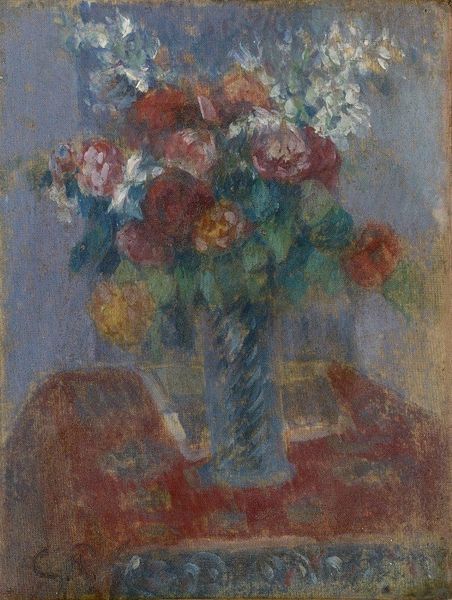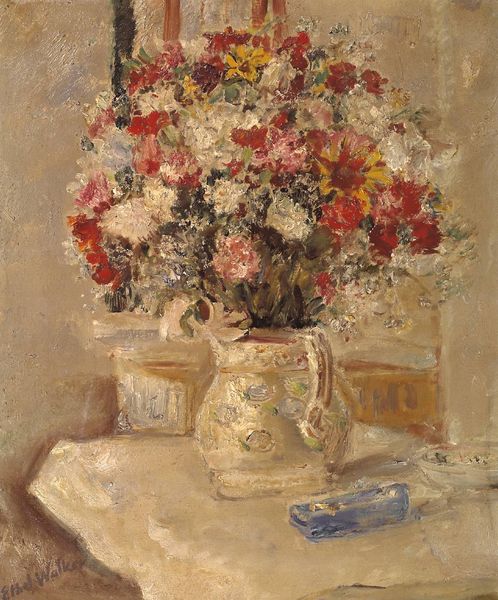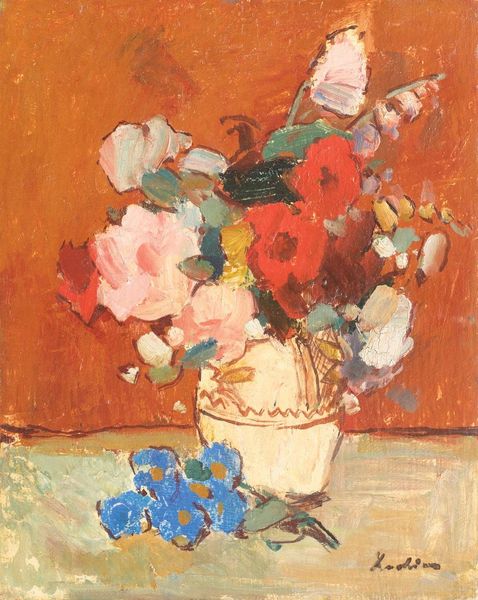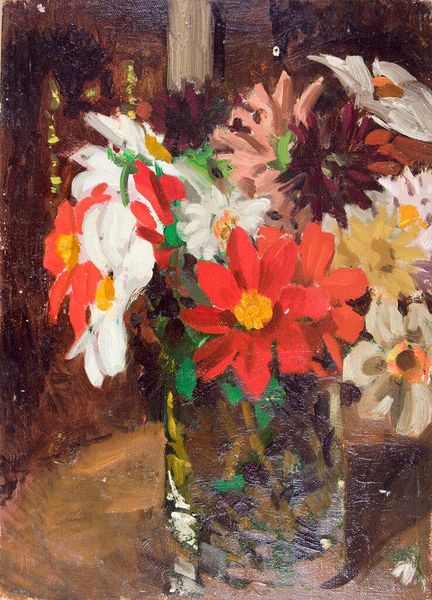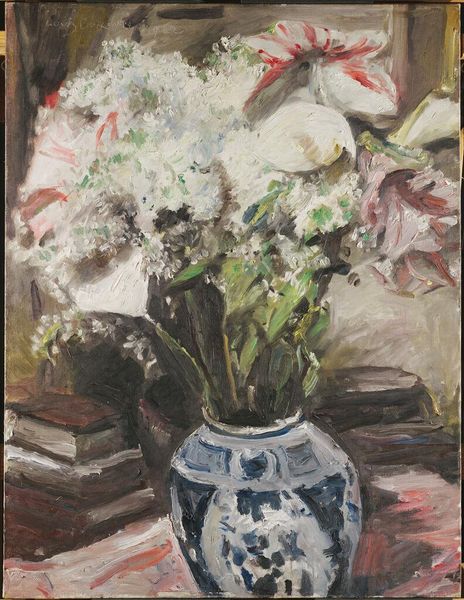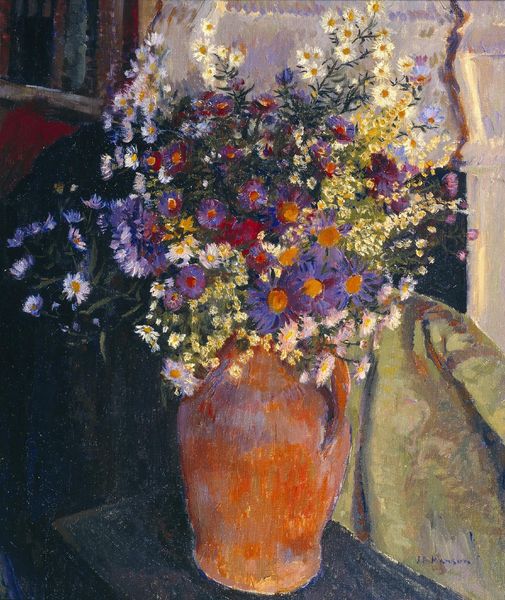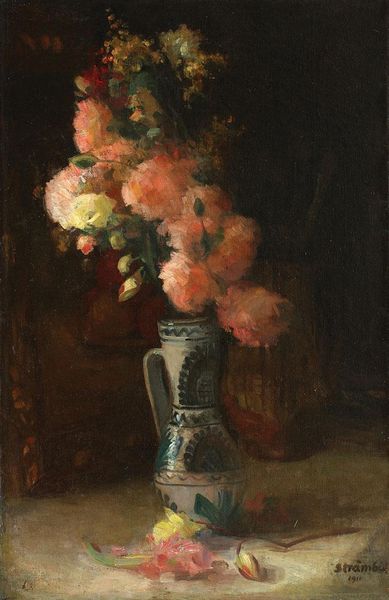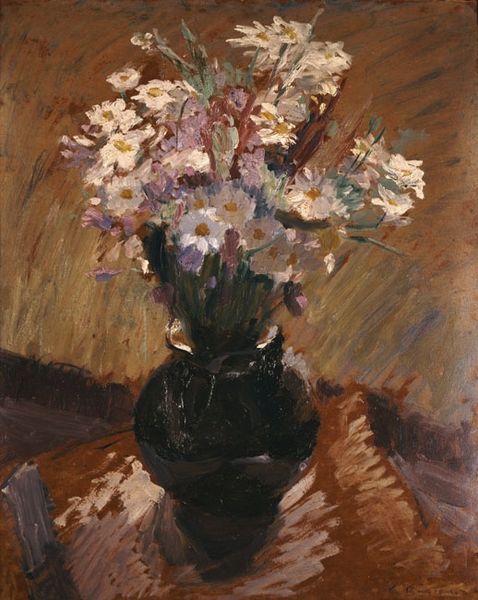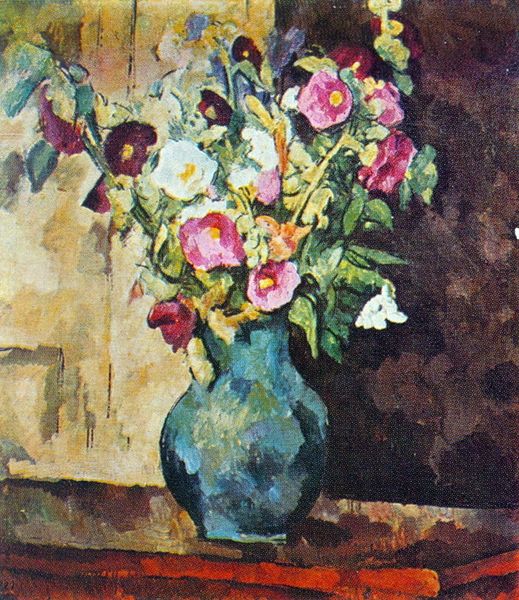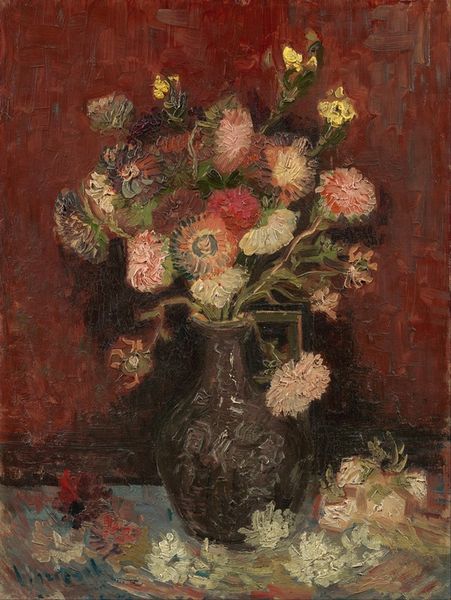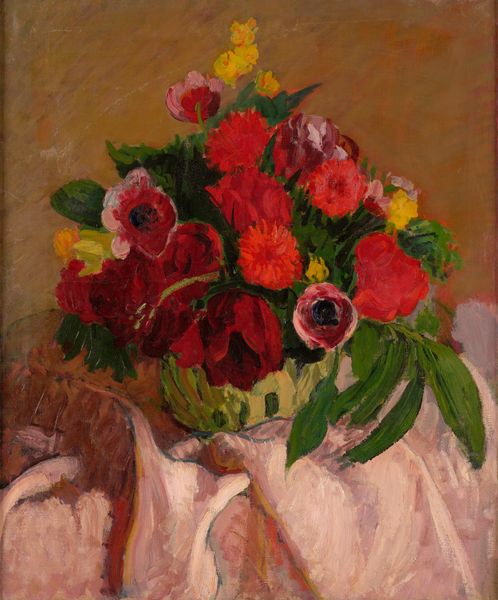
Copyright: Public domain
Editor: Gwen John’s “Flowers,” painted around 1910, is executed with thick, almost creamy oil paint. There’s something very intimate about its scale and composition. How do you interpret this work? Curator: John's choice to paint these common flowers at this scale feels particularly potent when considered alongside the gendered expectations of art in the early 20th century. We must ask ourselves: whose stories and experiences are deemed worthy of representation, and on what scale? Editor: So, you're saying the act of a woman artist choosing a simple subject like flowers becomes almost a political act? Curator: Precisely. During that time, there were immense social restrictions against women artists expressing themselves professionally, and those boundaries informed what they depicted. Choosing these domestic, small-scale flowers is subtle resistance; it quietly pushes back against a history that largely excluded women's perspectives. Editor: I hadn’t thought of it that way. I was initially drawn to the light and texture, but now it makes so much sense in the context of the period. Curator: The materiality of impasto also enhances the message of this painting. The physicality of the paint is quite striking, adding a sense of directness and emotional charge that emphasizes female labor and rejects typical beauty standards of paintings created by male counterparts. In a way, John empowers her perspective by highlighting her material involvement within the painting process. What are your thoughts about that? Editor: Seeing the impasto now, it gives the work such a contemporary, visceral feel. It almost makes it more immediate and personal. Curator: Absolutely. It speaks to the painting’s enduring power to make us reconsider not just art history, but who gets to make history through art. Editor: It’s given me a lot to think about – looking beyond the surface and considering the deeper societal implications. Thanks so much!
Comments
No comments
Be the first to comment and join the conversation on the ultimate creative platform.

